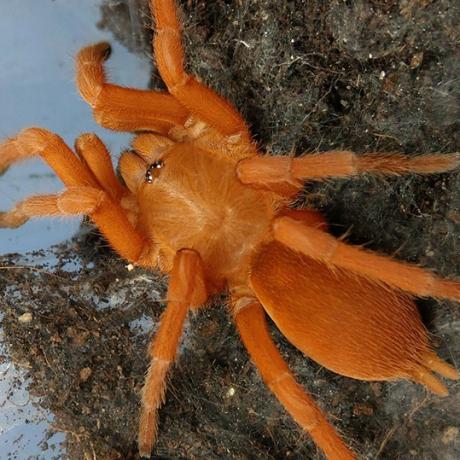

A secretive and bright orange fossorial species of tarantula which favours warm and humid conditions.
| Lifestyle | Fossorial |
|---|---|
| Adult Size | 7-8cm |
| Growth Rate | Average |
| Environment | Grassland |
| Suitability | Experience required |
| Temperament | Shy and Skittish |
The Philippine Tangerine also known as the Philippine orange or Neon orange gets its name from its outstanding bright orange colouration. From the carapace to spinnerets this beauty couldn’t be more orange if it tried. With them only having short hairs on their body this gives them a lovely sheen and almost makes them appear velvet like. Unlike other related Orphnaecus species the Philippine tangerine has slim line legs and an elongated abdomen, making them equipt for speed and burrowing.
Do you really need to ask? The Philippines of course, to be exact they can be found in deep burrows in grassland areas of the Philippines. Here rainfall can be monthly so humidity levels can rise more especially during the monsoon months.
This species is really easy to care for and seems to thrive well in captivity. A terrestrial plastic or glass set up should be used with a deep base substrate around 5-6inches deep to allow the tarantula to burrow as it would naturally. Philippine tangerines only grow to have a 3inch leg span so you don’t need too big of an enclosure.
No additional heating is required as room temperature is more than adequate. However if you do find your house is cold or the tarantula isn’t settling well a small low wattage heat mat connected to a thermostat can help. Temperatures for Philippine Tangerines can fluctuate between 78F-84F as they adapt really well to temperature changes.
Humidity for this species should remain around 70-80%. This can be achieved by overfilling the tarantula’s water bowl and allowing it dry out in the enclosure. For spiderlings spraying one side of the enclosure will allow them to drink the water droplets.
When it comes to feeding we recommend micro or small crickets for spiderlings, juveniles and adults will feed on a variety of bigger live food including crickets, mealworms and locusts.